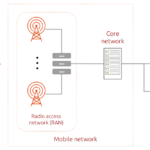Data analytics is among the most captivating subjects of the past century. With its applicability in various industries, it’s understandable why it has been ranked as one of the top 20 rapidly expanding occupations in the US, as per the Bureau of Labour Statistics. However, venturing into this swiftly growing realm is not simple: novices encounter significant hurdles in setting up their environments, handling software dependencies, or accessing computing resources. Due to these challenges, a shortage of skilled individuals persists in the data analytics sector, emphasizing the importance of surmounting these obstacles for teams and organizations.
This blog will guide you through the typical challenges that new data analytics entrants confront, evaluate popular data analytics platforms, and examine the broader view of how open-source is leveraged in data analytics. With this knowledge, you’ll be better equipped to choose the appropriate tools and solutions to streamline your work and concentrate on advancing your expertise in the realm of data analytics.
Is initiating a career in data analytics straightforward?
Data analytics is a fulfilling career path, but commencing as a beginner can be tough. Here are the most common difficulties that new data analysts encounter at the start of their careers:
- Time invested in tooling: Data analysts spend more time configuring and troubleshooting their tools than constructing models. Amidst tool selection and integration, software dependencies, individuals active in this domain always need to ensure the system functions smoothly. While looking for a ready-to-use solution seems like the most apparent choice, tools that seamlessly integrate and can be deployed rapidly are also viable alternatives.
- Setups: Whether it’s GPU setups or managing software dependencies, data analysts must handle painstaking tasks before they can commence their work. A study from Anaconda found that around a quarter of professional data analysts reported being hindered by handling software dependencies or obtaining computing resources.
- Learning curve: New advancements emerge frequently in this sector, making it overwhelming for newcomers who are pressured to swiftly enhance their skills across various areas simultaneously, from coding to maintaining development tools. Data analysts consistently elevate their skills through various channels, often independently: according to the latest Stack Overflow Developer Survey, a majority of developers enhance their skills using online courses, blogs, and technical documentation. This demonstrates that data analysts require time and space to concentrate on acquiring the specific skills they aim for rather than preparing the groundwork to commence learning.
- Initial expenses: Data analytics may involve considerable costs; beginners prefer to minimize their initial investment before committing long-term to data analytics as their career trajectory. Open-source tools have been a valuable option for reducing setup expenses: they empower aspiring data analysts and ML engineers to kickstart their journey at no cost and gain access to existing projects.
As evident, new data analysts generally face a challenging start. Nevertheless, once they find their footing, it becomes smoother day by day.
How to select a Data Analytics platform
As discussed earlier, it appears that a new tool, framework, or library for data analytics or machine learning emerges frequently. This profusion can be overwhelming. How do you actually choose from this extensive array of options?
Before delving into the specifics of tools, let’s pause to consider the main functionalities and crucial factors a data analytics platform should possess:
- Exploratory data analysis: The ability to conduct initial exploratory data analysis is critical, particularly for individuals planning to leverage a data analytics tool on a workstation. This capability enables them to focus on the initial stages of the machine learning lifecycle, comprehend the dataset, create data visualizations, and perform preliminary data preprocessing.
- Machine learning lifecycle: The primary goal of any professional or enthusiast active in this domain is to develop models. Therefore, they require tools that encompass various aspects of the machine learning lifecycle, facilitating model creation, storage, experiment tracking, and reproducibility. It streamlines the initial phase of the machine learning lifecycle, ensuring the development of models is simplified.
- Popular utilities: For beginners, the wide adoption of their selected tools can make or break their journey. When a tool is utilized by a larger audience, it typically boasts better awareness and documentation on bugs, obstacles, and solutions. In the realm of open source, the community offers extensive support and guidance, allowing professionals from diverse fields to benefit from continual enhancements, fixes, and workarounds for prevalent tools and platforms.
- User-friendly interface: Everyone prefers tools that are straightforward to utilize. The primary objective of a data analyst is not to endlessly tinker with tools, hence having an intuitive platform that expedites project delivery and diminishes the learning curve is crucial for their tasks.
Expandability: While many AI initiatives commence modestly, every data analyst should harbor a long-term vision and assess scalability capabilities. This enables data analysts to evolve as projects advance without needing to switch to different tools.
Enroll in our webinar to explore more about data analytics tools
Register now
Now that we grasp what to seek in a data analytics tool or platform, let’s scrutinize the prominent options data analysts commonly utilize.
Circling back to the fondness for open source, it’s worthwhile to examine the entire stack and how open-source tools can hasten the complete process. Linux has been a trailblazer in the open-source arena, with Ubuntu emerging as the most prevalent distribution. It boasts a robust command line appreciated by data analysts and machine learning engineers alike, streamlining their operational duties. Furthermore, open source offers numerous benefits that can enrich an individual’s journey in the data analytics field. Python serves as an excellent example: it is the preferred programming language in data analytics, with many of its libraries like Pandas, Numpy, PyTorch, and TensorFlow being extensively adopted in numerous data analytics schemes.
But how do you practically devise the models? As per the Stack Overflow survey mentioned earlier, Jupyter Notebook is listed as one of the top technologies utilized in data analytics. It serves as a potent tool for executing various data analytics or machine learning operations, such as data cleansing, designing ML workflows, or training models. In a similar sphere, MLflow, employed for experiment tracking and model registry, amassed 10 million users over a year ago, fueling open-source adoption. Such a platform is frequently deployed on a workstation equipped with a GPU, necessitating proper configuration. Notably, NVIDIA offers a GPU operator to streamline the experience for cloud-native applications.
These constitute just a fraction of the tools available. Once selected, data analysts must integrate them into a cohesive solution. Upon deployment, a series of distinct packages with dependencies and version constraints are utilized. Users must coordinate this endeavor to uphold the platform’s functionality, including managing upgrades and updates that may pose challenges.
Considering the initial challenges faced by data analysts, they should seek tools that cover most of them at minimal costs. The Data Science Package (DSS) provided by Canonical is a solution that amalgamates leading open-source tools handling a part of the machine learning lifecycle, enabling users to craft, refine, and store models devoid of exorbitant setup expenditures, time-consuming configurations, or arduous setups.
What constitutes the Data Science Package (DSS)?
The Data Science Package (DSS) is a pre-configured solution for data analysts and machine learning enthusiasts provided by Canonical. It serves as a ready-to-use environment for ML aficionados, allowing them to fabricate and refine models without investing time in essential tooling. Designed to operate on any Ubuntu AI workstation, it optimizes GPU utilization and simplifies its operation. Intrigued?
DSS incorporates leading open-source tools like Jupyter Notebook and MLflow with seamless integration. It encompasses by default two of the most adopted ML frameworks, Pytorch and TensorFlow. These can be deployed using an intuitive command line interface (CLI), following which the tool UIs are accessible for delving into data analytics.
Besides facilitating access to an ML solution, DSS manages packaging dependencies, ensuring that all tools, libraries, and frameworks operate seamlessly together and are compatible with the machine’s hardware. Additionally, DSS streamlines GPU setup by incorporating the GPU operator along with its associated benefits.
Test Canonical’s Data Science Package
Now available in beta, urging data analysts, machine learning engineers, and AI enthusiasts to provide feedback. Easily deploy it on your Ubuntu device, share your experiences with us, and benefit from the ongoing community inputs.
Participate in our webinar
If you desire further insights on data analytics tools, join our upcoming webinar on [date]. Alongside Michal Hucko, we will discuss:
- Key considerations for selecting data analytics tools
- Challenges within the data analytics landscape
- Data analytics leveraging open-source tools
- Walkthrough of the DSS
Enroll in our webinar to learn more about data analytics tools
Register now
Additional resources
https://ubuntu.com//blog/data-science-stack











